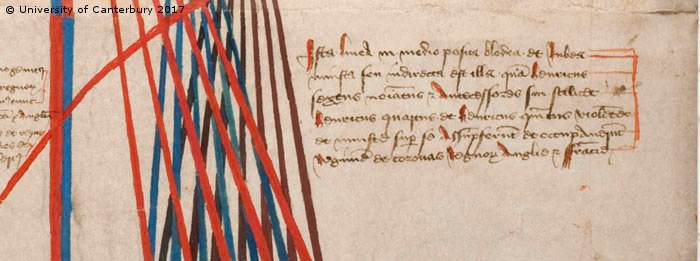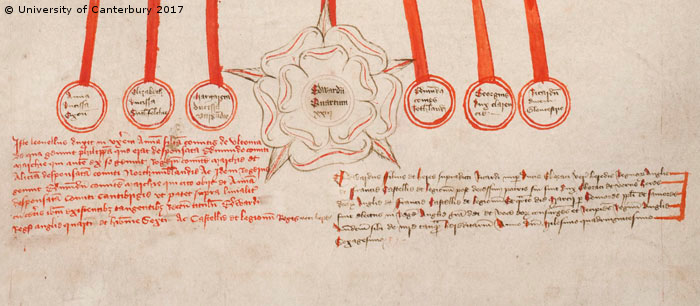Yorkist amendments
The Yorkist Scribe who worked on the "corrections" was ambitious – a fact testified to by the extensive red (and messy) modifications visible in the final section of the roll.
The additions are most obvious down the left hand side of the Roll. The Yorkist Scribe uses only red and black ink. He takes noticeably less care with his amendments than the Lancastrian Scribe took in preparing his neatly measured circles and straight lines.
In order to make sense of the Yorkist claim, the new scribe inserts the Mortimers of March (a family with close links to the Yorkists). The Mortimers and their royal marriages help explain Edward IV's maternal ancestry.
The uneven red lines culminate in the last rose at the bottom, containing the name of the first Yorkist king: "EDWARDUM QUARTUM" (Edward IV).
In addition to adding to the diagram itself, the Yorkist Scribe also contributed his own commentary to explain his changes.
Squeezed in between the original commentary, the scribe identifies the Lancastrian king Henry IV – now reduced to "Henry of Derby" – as the cause of the succession crisis.




